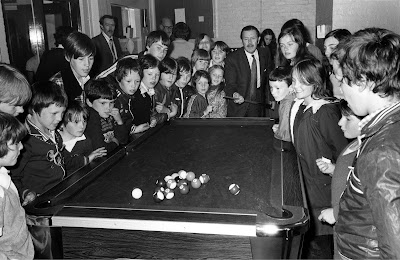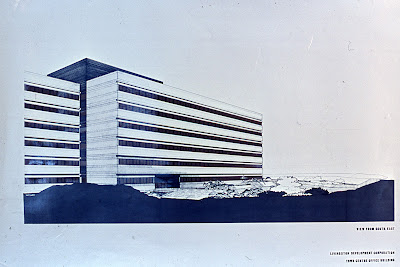It has been found that there are three phases to the ‘settling-in’ process in the new town. While this is a general finding, the length of each ‘phase’ varies for each family.
Phase 1: Honeymoon period. During this time the family is so excited by its new home that everything seems perfect. It is difficult to point out the problems and drawbacks. This ends when all the furniture has arrived and been placed, the new carpets are fitted, husband is settled in work again, and children at school. It is common for the family to revisit Glasgow/Edinburgh etc. at weekends or for parents/in-laws to visit the family here, so that there is little opportunity to explore the possibilities of the town.
Phase II: this begins when there is no longer the flurry of finding the shops, the school, the doctor etc., and the worry of evaluating the decision to come here commences in the ligh to fits consequences. A feeling of isolation is common and doubts are very strong, homesick feelings being quite usual.
Contributory factors:
1. Wrong expectations. Ofter a family will expect some long standing family problem to be solved by this move, although they very rarely admit this, even to themselves. This can greatly increase anxiety at this time. There is also misinformation about the town itself and anger results when the truth is discovered (usually wrong ideas about employment situation, shops, buses)
2. Bus services. The absence of rail services and the comparative infrequency of buses compared to the city makes it very difficult for people to travel to work and drop in on their old haunts. This causes great frustration, as families are made to feel completely dependent on the town right from the start without gradually ‘growing away’ from their previous home.
3. Telephones. Corner telephones are very important to the new arrival for him to keep in contact, especially with elderly relative whom he may feel he has abandoned . This is accentuated by delays in installation of private lines (several months at times).
4. Day nurseries. A young mother’s feeling of isolation can be increased to desperation if she cannot escape from her under-5s. While we have play groups in the town, these can only take a child for two sessions a week at most, and there are waiting lists, even for this facility. It is not enough for a mother coping with several under 5s. There is no facility for under 3s. A young mother may miss extended family where grandmothers, aunts etc., could keep children while mum went shopping, to the hairdressers.
5. Absence of commercial facilities which town dwellers expect. This includes shops, cinema, restaurant, Barrows, swimming pool. Although these facilities may never have been used by the family in the city, they miss the availability and the opportunity. Shops are really missed as a day at the shops cannot be spent here.
6. Strangeness of layout. Whilst this is not important in itself, frustration is felt at not knowing the area and segregated pathways are initially confusing. Although street plans are given out with other town information, this is often put away during the first phase and not remembered when it is needed.
Phase III: This is the time when the family will settle (or not), and depends largely on the effect of the above factors on the family, especially wrong expectations. Most families do settle perfectly well, and enjoy living here. If a visit can be made to the family during phase II (about 8 weeks after arrival) this can make an enormous difference to anxiety level.
Those who do not settle –
1. Families coming ONLY for the sake of a house. Usual comment “If I could only take this ho use back with me to....”
2. Families coming with a problem – unemployment, debt, truancy, marital problems. They expect too much, and cannot find their traditional forms of help in the area. Thier sense of failure can be increased in a new town as they feel they have no reason to fail. A visitor can greatly help this type of family.
3. Older parents (40+), who have no family in the area.
Those who do settle:
1. The vast majority of people, who are happy within their own family unit and appreciate the housing and environment which gives them an opportunity to be part of something new.
2. Those with a special interest in some club or other, as they have plenty of scope here to develop this and the town is very glad of their help and interest. They can build up tremendous morale in their own family and in the town.
3. Ex-service families, who are used to moving around a lot and settling quickly. They do not expect much in the way of facilities, and like the idea of a new town. They are often a bit older than the average young family.
4. Pensioners. Our pensioners are exceptionally happy here, possibly because they have an extra last chance to have a good time. Their clubs and activities thrive, and there is also an outlet for those who wish to help the old.
5. Families returned from Canada/Australia etc. For some reason these people settle very well, perhaps for the same reasons as ex-service people.
Janet & Joan.

.bmp)
.jpg)








